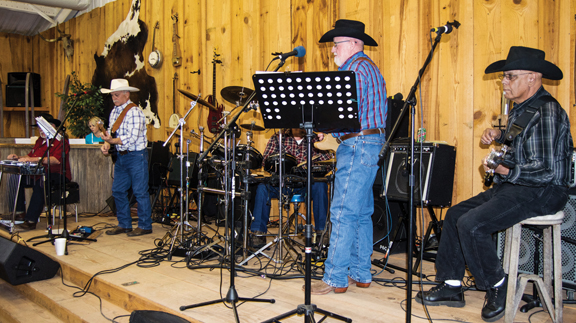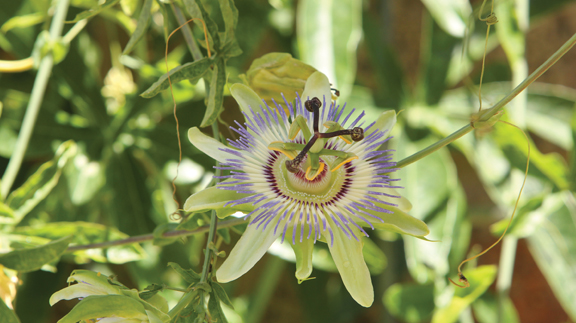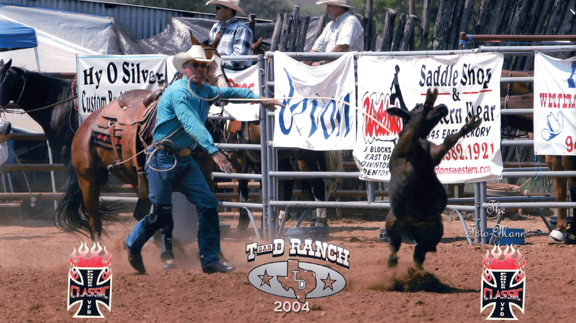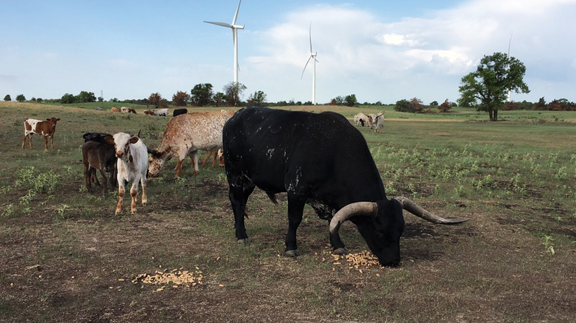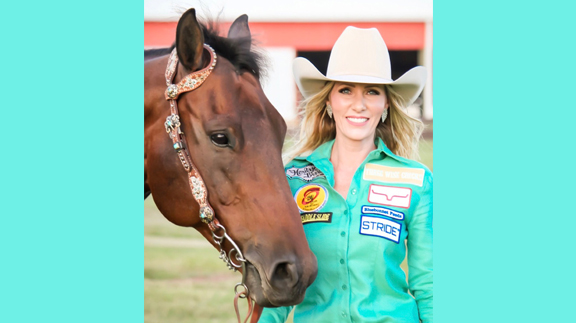Equine
Umbilical Hernia

By Lauren Lamb
An umbilical hernia is a defect in the horse’s ventral body wall at the location of the umbilicus. The umbilicus is the equivalent of our belly button. The umbilicus is where the umbilical cord attaches to the foal while it is developing in the mare’s uterus. The umbilical cord is made up of a vein, two arteries and the urachus. The umbilical vein and artery carry blood to and from the fetus as it is developing in the uterus. The urachus is a tube that connects to the fetus’ bladder and carries urine from the developing fetus.
Umbilical hernias are seen in foals between the ages of birth and three months of age. The hernia bump seen on the bottom of the abdomen is made up of skin, subcutaneous tissue, peritoneum (lining of the abdomen) and a piece of the gastrointestinal tract.
Questions concerning umbilical hernias frequently asked by owners:
- How does an umbilical hernia develop?
- Are they genetic?
- How can I prevent an umbilical hernia?
Some evidence shows umbilical hernias may have a genetic component; however, the genetic influence is most likely mild. This means breeding a mare and/or stud that had an umbilical hernia when they were foals will not result in an offspring with an umbilical hernia. The flip side of the coin is also true; crossing a mare and stud with no history of umbilical hernias will not result in a foal without an umbilical hernia.
Some have a strong belief that foaling behavior of the mare immediately after delivery can have an influence on whether a foal will develop an umbilical hernia. The natural behavior of a mare following delivery of her foal is to remain lying down until the foal starts to move and becomes more active. This may take several minutes for the foal to become active. Once the foal becomes active, the mare will stand up and break the umbilical cord about one inch from the foal’s navel. When a mare stands prematurely, the risk of an umbilical hernia forming can be increased. The most common reason for a mare to stand prematurely is human intervention. When humans try to rush into the stall to assist the foal or mare, the mare will become nervous and stand up too early.
An umbilical infection can lead to an umbilical hernia. The post foaling care of the umbilicus can influence whether or not a foal will develop an umbilical infection. The umbilicus should be dipped in dilute Nolvasan solution or betadine solution two to three times a day for the first three days of life. An umbilical infection is likely to occur if the umbilicus is not dipped in an antiseptic solution for the first three days after birth.
The size of an umbilical hernia is measured in fingers, aka the number of fingers that will fit in the hernia. A small hernia is less than three fingers in size. A large hernia is anything bigger than three fingers in size. The hernia should not be painful on palpation, nor should there be any heat or swelling around the hernia. When you place your fingers in the hernia, the contents of the hernia should be easily reduced (pushed back into the abdomen). A veterinarian should be contacted as soon as possible if you notice any heat, swelling, pain on palpation or you cannot reduce the hernia. A veterinarian should also be contacted as soon as possible if a horse with an umbilical hernia starts to colic. All these clinical signs are evidence that a portion of the intestine is stuck within the hernia. When the intestine is stuck within the hernia, the blood supply to the intestine can be compromised, which will result in the intestine becoming necrotic—dead. The hernia should be checked daily to ensure none of the previously mentioned clinical signs have developed.
Several treatment options are available for hernias. One conservative treatment option for small hernias (less than three fingers), is to reduce the hernia one to three times a day. By reducing the hernia you allow the hernia ring (defect in the body wall) to heal close. When the foal reaches four months of age, there is little chance that the hernia will heal with conservative therapy. Any foal that is greater than four months of age with an umbilical hernia will need a surgery to repair the hernia.
An umbilical hernia has two surgical repair options—both require general anesthesia and can be performed in a clean stall or a surgery room. A hernia repair performed in a surgery room has lower complication rate following surgery.
The first surgical option is called the closed technique. With the closed technique, the abdominal cavity is not opened, but the skin and subcutaneous tissue are opened. The hernia is repaired by placing large sutures across the abdominal defect. The closed technique decreases the risk of an infection occurring within the abdomen, but it increases the risk that a portion of the intestine is sutured to the body wall. The closed technique is usually used in cases were the surgery is performed in a stall within the barn. In this location, there is higher environmental contamination compared to a surgery room.
The open technique is the second option. With the open technique the abdominal cavity is opened and large sutures are placed across the defect to close the hernia. With the open technique, the risk of the intestine being sutured to the abdominal wall are significantly decreased. The open technique should be performed in a surgery room.
Following surgery, foals are kept on stall rest with no hand walking for two weeks and then turnout in a small paddock or trap for an additional two weeks. After four weeks, foals are allowed to go back to regular turnout and exercise.
Umbilical hernias are abdominal wall defects that are commonly seen in foals. The cause of an umbilical hernia is not completely understood; however, both genetics and husbandry practice can contribute to a horse developing an umbilical hernia. Surgery is not always required to repair umbilical hernias unless the foal is over four months of age. At this age surgery is needed to repair the hernia. Following surgery, foals had a good prognosis.
Equine
Equine Metabolic Syndrome (EMS) – The Easy Keeper Disease
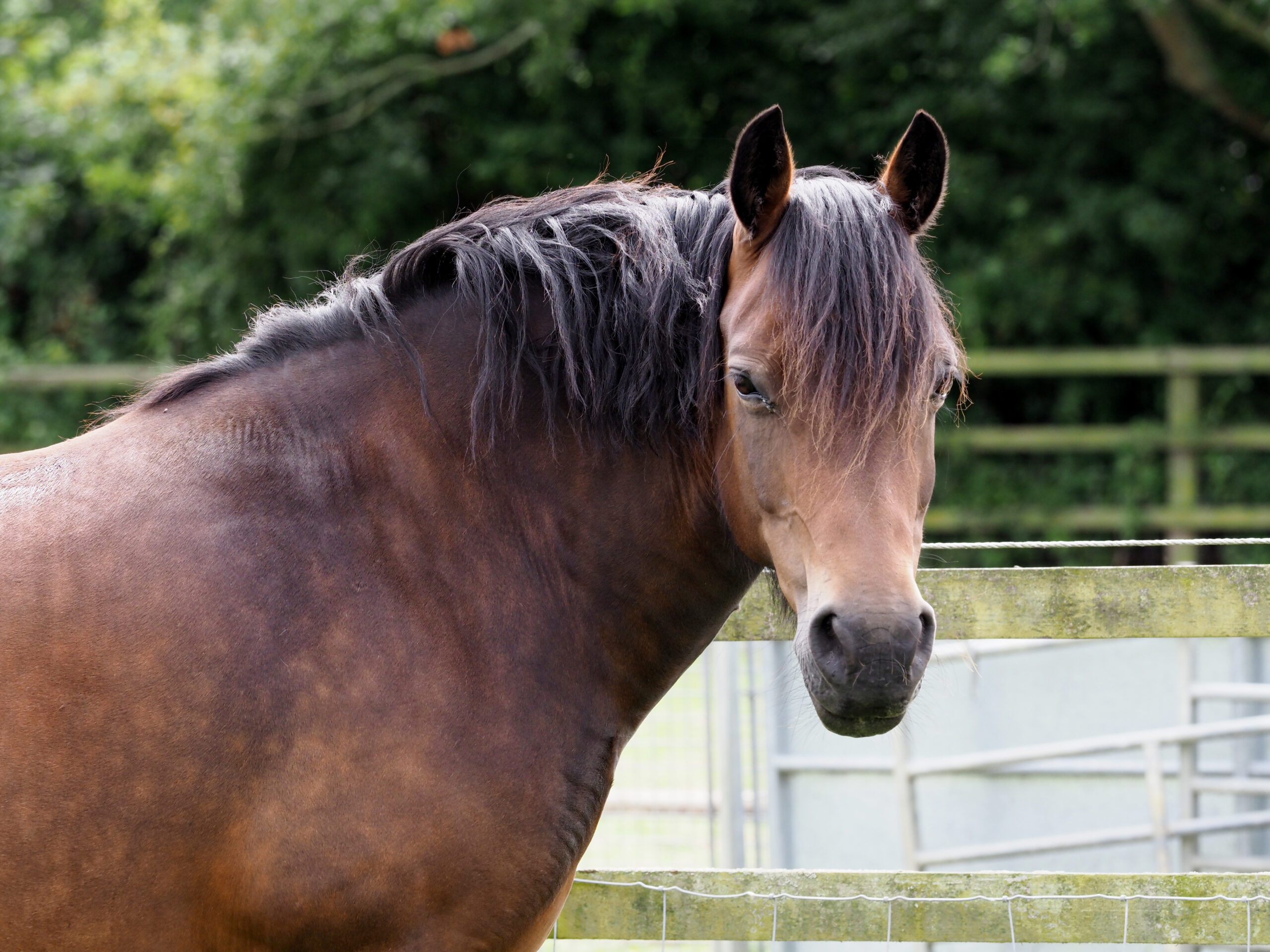
By Garrett Metcalf
It is that time of year when cases in veterinary practices that are diagnosed with EMS or Equine Metabolic Syndrome spike. The reason cases of EMS spike are because the fast growth that pastures experience in the spring. Before EMS was well understood or discovered, many of these horses were diagnosed with grass founder, but through research the process of the disease is now better understood. The disease is caused by obese overfed horses and breeds of horses that have “hardy genes.” These are breeds that generally need less caloric intake to meet their daily energy needs. Although some breeds are at higher risk such as ponies, just about any breed can develop EMS.
Risk Factors for EMS
The key risk factor for development of EMS is weight gain, breed, high caloric intake and very little or inconsistent exercise. Horses that gain weight easily on pasture turn out or are getting too many calories from grains plus hay can be put at risk of EMS. Increasing levels of obesity in horses causes insulin resistance just like in humans, but fortunately for the horse, they have a very robust pancreas that is able to keep up with the extra demand for insulin to provide adequate amounts of glucose to tissue and organ systems despite the insulin resistance. This overproduction of insulin in order to keep up with the resistance causes a very key clinical sign of laminitis, which can be the most debilitating and difficult consequence of EMS. Over 90% of horses will present for laminitis as the first clinical sign of EMS. Unfortunately, the clinical signs for laminitis can go undetected for many months or even years in some cases until the progression of the laminitis reaches a very severe tipping point. It is not uncommon that horses with this disease go undetected for variable periods of time and have x-rays to prove it. Many times, horses will have rotation of the coffin bone in the hoof capsule upwards of 10 degrees before the horse is lame enough to alert their owners that there is a serious problem. It doesn’t seem possible that a horse can get that bad overnight, but rather in many cases they have mini laminitic episodes that are almost silent to many owners that lead to this much damage to their feet over time.
Identifying Horses at Risk
A common feature that puts horses at risk that owners can detect and address themselves before a laminitic crisis occurs is adipose deposited in certain areas of the horse’s body called regional adiposity. Regional adiposity describes fat or adipose tissue that is deposited in different regions of horses that owners should watch for if their horse is gaining weight. These common areas are the neck, commonly referred to as cresty necks, around the tail head, and sheaths of geldings or stallions. If these areas are noticed to be enlarging, especially in the spring when there is an abundance of fresh grass to graze on plus weight gain, then steps need to be taken to prevent the development of EMS.
Managing an Easy Keeper
It is very common to hear owners and veterinarians refer to heavy horses as easy keepers, but there can be some serious consequences of ignoring or brushing it off as just an easy keeper horse. Simple steps can be taken to reverse or reduce the risk of horses developing EMS by decreasing daily caloric intake. First, it is recommended to remove all grain from a horse’s diet including treats. Drastically reducing turn out time to graze especially fast growing lush grass is absolutely necessary in horses at risk of grass founder caused by EMS. There is some conflicting evidence as to when is the best time of day to allow a horse to graze that is sensitive to high sugars in lush growing grass. Some research has found that sugar levels peek later in the afternoon because of an abundance of sunshine and fully ramped up photosynthesis process that occurs in the grass. It is suggested then if grazing is allowed or deemed safe, that morning grazing is a safer time, but sometimes letting an at-risk horse graze is not worth the consequences. Other methods of allowing safe grazing are to mow the grass very short to minimize the volume of grass intake in a given period of time. If mowing is not an option, specially designed grazing muzzles allow pasture turn out but restrict the amount of grass taken in through the muzzle. Do not worry, as many horses are very quick to figure out how to get grass through the small hole in the muzzle and also allow the intake of water. It is recommended to have a leather poll strap on their halters to prevent injury when turned out while wearing a halter. Dry lot management is sometimes the only option, especially in horses that already have EMS. Keeping a horse on dry lot with no access to fresh grass and feeding more mature hay is sometimes needed to manage more severe cases. There are no current medications to help reduced the effects of insulin resistance due to obesity in horses, but some medications can be used to help with weight loss such as Thryo-L (levothyroxine) combined with consistent exercise.
Laminitis
Laminitis is the most debilitating and painful outcome of EMS, not to mention life threating. It is also the most expensive and difficult aspect of managing a horse with EMS. In order to properly manage laminitis caused by EMS, the horse needs to be examined by a veterinarian, radiographs need to be taken of the feet to assess the severity of the laminitis and an experienced farrier needs to be heavily involved with the management of the feet. If the disease is caught early, proper trimming may be all that is needed plus the other management aspects employed, of course, but in many cases corrective therapeutic shoeing is required. Pain management is another key aspect of addressing laminitis. NSAIDs or non-steroidal anti-inflammatory drugs, opioids, aspirin and an anticonvulsant drug called Gabapentin can help block or reduce pain of laminitis that horses experience. Some of these drugs do carry a risk of serious side effects so careful monitoring and proper dosages need to be on the order of a veterinarian to minimize the risk of side effects.
It cannot be repeated enough that the best cure for disease is through prevention. Taking early appropriate steps to keep horses from developing EMS is by far the best way to prevent the disease from occurring. If there is concern your horse is at risk of EMS, please talk to your veterinarian to determine if management and diet changes need to be made to prevent the development of this disease.
Equine
Cudd Quarter Horses Production & Consignment Sale Benefits Rein in Cancer
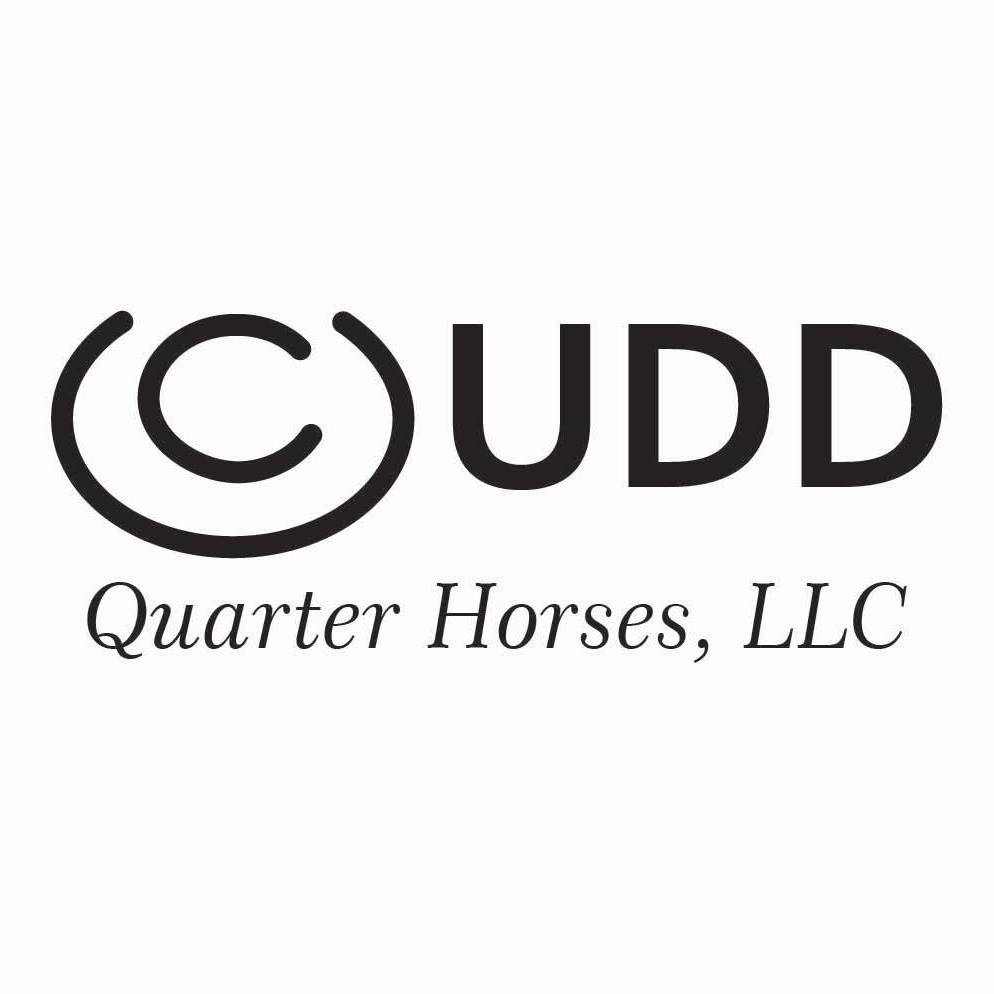
The Cudd Quarter Horses 38th annual sale is set for June 8 at the ranch in Woodward, Okla., and a special horse sold will benefit the Sooner State-based 501(c)(3) Rein in Cancer. Once again, Alice Goldseeker, a sorrel yearling mare by Bay John Goldseeker (King W Goldseeker x Jazzabell Jazz) out of Alices Cat (Cat Ichi x Squirrel Tooth Alice), will sell as lot #24 and, thanks to the generosity of Renee Jane Cudd, the proceed of her sale will go to benefit Rein in Cancer.
Rein in Cancer co-founder Shorty Koger expressed gratitude, saying, “We deeply appreciate Renee Cudd’s support of Rein in Cancer. The funds we provide are crucial for those facing the many challenges of cancer treatment.”
Cheryl Cody, President of Rein in Cancer, emphasized the importance of community support: “Support for Rein in Cancer means so much. The funds are allocated in two key ways: first, to sustain the Shirley Bowman Nutrition Center, which offers care to cancer patients regardless of their financial situation; and second, to provide direct financial assistance to individuals in the horse industry undergoing cancer treatment. Cancer affects everyone, whether personally or through loved ones, making this cause incredibly important. We are extremely grateful to Renee for her support.”
Cudd Quarter Horses was begun in 1985 by Renee Jane Cudd and her late husband, Bobby Joe Cudd. The ranch has been a leading breeder of AQHA Ranch and Roping horses for over 30 years, and the annual Production Sale is always a popular event. Renee noted, “Bobby Joe passed away in 2005, and I feel so lucky that I have been able to continue with it.”
For information on the sale, visit the Cudd Quarter Horses Facebook page.
Rein in Cancer was founded in 2007 by three friends: Shorty Koger of Shorty’s Caboy Hattery, Cheryl Cody of Pro Management, Inc., and healthcare professional Tracie Clark. These founders continue to lead the 501(c)(3) organization, which has raised millions of dollars. Rein in Cancer funds and supports the nutrition clinic at the University of Oklahoma’s Charles and Peggy Stephenson Cancer Center, offering services to all patients regardless of their ability to pay. Additionally, the organization provides direct financial assistance to individuals in the Western performance industry undergoing cancer treatments.
For information on Rein in Cancer, visit ReinInCancer.com.
Equine
Equine Flexural Limb Deformities

By Dr. Garrett Metcalf
Flexural limb issues can occur in different age groups of horses, starting with newborns up to two- to three-year-olds. These issues occur somewhat predictably in age groups and can be addressed rather quickly when needed. There are various treatments and methods that can be used to address flexural issues. This article will discuss the most common flexural abnormalities and treatment methods.
Foal Flexural Issues
Foal flexural issues are often considered congenital flexural limb abnormalities because they are born with them. We don’t fully understand why this occurs but there is some evidence in the human literature that lack of fetal activity in the womb causes club feet in babies. In foals, it is thought that uterine positioning is to blame for part of the contracted tendons. Other causes can be exposure of the mare to toxic plants or substances that may be toxic to the fetus.
The most common area that a foal will have contracture of limb is at the carpus or knee. These foals will not be able to fully extend the knee and often will affect both at the same time. These foals can have difficulty standing to nurse or will get fatigued quickly and will not be able to stand for longer periods of time. There can also be damage to the extensor tendons or even rupture of extensor tendons caused by the high strain placed on them when the foal tries to stay standing. The rupturing of these tendons is not overly concerning but the lack of extensor function can make the flexural limb deformity worsen.
Other common locations of flexural limb deformities can be at the fetlock or coffin joint level. These deformities are not usually as detrimental to allowing the foal to stand and nurse properly compared to carpal flexural deformities. These deformities can be addressed similar to carpal deformities with some exceptions.
Treatment of Flexural Deformities
Splints or casts can be used to stretch and support the effected limbs of foals. Splints are often preferred by most veterinarians because they can be repositioned or reset as needed. Splints are easier to place on the limbs of foals but they do need resetting every 24 to 48 hours. Casting of the limbs is more rigid but is not adjustable once placed. Casting is often needed in more severe cases and requires changing frequently. Whenever placing these devices, care must be taken to prevent splint or cast sores because foal skin is rather delicate.
Surgical intervention is needed in some cases of carpal flexural deformities. A study out of Australia found that cutting of two muscle/tendon groups on the back of the carpus greatly improved the ability to extend the carpus with splinting methods. Cutting of these tendons do not have consequence to future athletic function. The two muscles are called flexor carpi ulnaris and ulnaris lateralis.
An antibiotic called Oxytetracycline is helpful to treat flexural limb deformities because of its side effect of causing tendon laxity. The laxity is created by chelating calcium within the tendons and allows the relaxation of tendons. This method does have some risk because of the high dose required and renal injury that it can cause when not administered with IV fluids.
Toe extension shoes are used when it comes to dealing with lower limb flexural limb deformities. These shoes are often applied with adhesives and after the splinting or casting is no longer needed. The toe extension shoe allow foal to continue to stretch those tendons every time they take a step and prevent from becoming contracted again.
Older horses (six months or older) with contracted tendons often get acquired limb deformities and the horses need surgical intervention to correct these deformities. These surgeries cut or release check ligaments that allows the musculotendinous unit of the deep digital or superficial digital flexor tendon to elongate. The deep digital flexor tendon is responsible for causing club feet or a flexural limb deformity at the coffin joint. The superficial digital flexor tendon is responsible flexor tendon that causes a flexural limb deformity at the fetlock joint. The check ligaments attach the tendon to bone and do not allow the tendon to elongate past a certain point. By eliminating these ligaments the flexural limb deformity can be corrected by allowing the muscle to stretch since the tendon is much more rigid.
Flexural limb deformities can be caused by excessive laxity or weakness of the tendons. These deformities are often seen in premature foals or foals that are born at a much smaller birth weight. The excessive laxity will cause the toes of there feet to flip up in the air and the fetlocks to be touching the ground. The areas where the skin is contacting the ground will cause sores and abrasions. If these areas are note protected the wounds can get into deep structures causing serious infection and injury the flexor tendons.
Treatment for tendon laxity is to add heel extension shoes to keep the toes flat to the ground. The extension behind the foot forces the toe down under the foals own weight. As the foal becomes stronger from normal activity the muscle attached to the tendons can support the foal and the limb laxity will correct itself. Abrasions still can occur even with heel extension shoes are in place so bandages need to be applied to protect these areas.
Flexural limb issues are a common issue that horses and owners will face. It is best to have your horse evaluated by a veterinarian whenever these problems are suspected. Foal flexural limb deformities can be life threatening because of the limitation of standing on time to nurse colostrum. Without colostrum within the first hours of life the foal is a much higher risk of sepsis and death.
Read more in the August 2023 issue of Oklahoma Farm & Ranch.
-

 Country Lifestyle7 years ago
Country Lifestyle7 years agoJuly 2017 Profile: J.W. Hart
-

 Outdoors6 years ago
Outdoors6 years agoGrazing Oklahoma: Honey Locust
-

 Country Lifestyle3 years ago
Country Lifestyle3 years agoThe Two Sides of Colten Jesse
-

 Outdoors4 years ago
Outdoors4 years agoPecan Production Information: Online Resources for Growers
-

 Attractions7 years ago
Attractions7 years ago48 Hours in Atoka Remembered
-

 Farm & Ranch6 years ago
Farm & Ranch6 years agoHackberry (Celtis spp.)
-

 Outdoors3 years ago
Outdoors3 years agoSuzy Landess: Conservation carries history into the future
-

 Equine4 years ago
Equine4 years agoOn the Road with Emily Miller-Beisel

